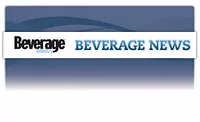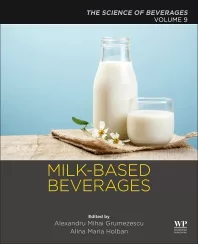Three-tier industry coalition issues responsibility commitment for crossover alcohol products
Commitment includes actions for suppliers, provisions for wholesalers and retailers
The Distilled Spirits Council of the United States (DISCUS), Wine & Spirits Wholesalers of America (WSWA), FMI - The Food Industry Association and the National Association of Convenience Stores (NACS) issued a joint commitment related to the responsible marketing and merchandising of crossover alcohol products.
Crossover alcohol products are generally categorized as alcohol beverages that use the product and intellectual property (brand names, logos, etc.) of existing non-alcohol brands. The DISCUS Code Review Board previously issued guidance on how to responsibly advertise and merchandise these products in December 2022.
“Today’s commitment brings together all three tiers ― suppliers, wholesalers and retailers ― reinforcing our dedication to responsibly advertise, market and merchandize these products in a manner that avoids consumer confusion and ensures they are only marketed and sold to legal drinking age adults,” said Chris Swonger, president and CEO of DISCUS, in a statement.
This industry commitment includes actions for suppliers to ensure crossover brand products abide by the DISCUS Code provisions, including advertisements directed to legal drinking age adults and the use of packaging and branding that is clearly and easily distinguishable from their non-alcohol beverage counterparts.
The commitment also includes provisions for wholesalers and retailers to ensure appropriate placement of these products in grocery and convenience store locations, as well as employee training and any necessary efforts to avoid consumer confusion.
“The alcohol industry has a longstanding track record of effective self-regulation, and the nation’s leading spirits and wine wholesalers have placed a critical focus on responsibility efforts in marketing beverage alcohol products,” said Francis Creighton, president and CEO at Wine & Spirits Wholesalers of America. “This commitment will play an important role in standardizing responsible merchandising and marketing practices throughout the country.”
Leslie G. Sarasin, president and CEO, FMI—The Food Industry Association, added: “The food industry has long been committed to ensuring alcohol beverages are properly marketed and merchandised in our members’ stores. It is vital that shoppers are provided with clear, easily understandable information about products to be able to make informed purchasing decisions for themselves and their families. This announcement demonstrates the food industry takes that responsibility seriously, especially as we see innovative new products entering the marketplace.”
Henry Armour, president and CEO, National Association of Convenience Stores, stated, “Our nation’s convenience stores proudly serve as an important market for consumers to purchase their favorite beverage and this commitment showcases our efforts to reduce the potential for confusion and ensure our customers are aware which products in our stores contain alcohol.”
COMMITMENT EXCERPTS
Producers of these products commit to responsibly produce, package and market these products. This includes the following:
• Responsible Advertising Codes: Compliance with the respective industry responsible advertising codes to ensure products are packaged and marketed appropriately, responsibly and to those of legal purchase age, such as the Distilled Spirits Council Code.
• Distinct and distinguishable: Product packaging and branding shall be clearly and easily distinguishable from non-alcohol beverage counterparts
• Provide notice that product contains alcohol: Product labels and packaging shall make it clear that it contains alcohol. This could include prominent references to the type of alcohol in the product, the percentage of alcohol by volume and/or general notices that the product contains alcohol.
• Appeal to adults: Review packaging and advertising campaigns to ensure they primarily appeal to legal drinking age adults and not to individuals under the age of 21.
Wholesalers and retailers commit to responsibly merchandise and market these products, in a manner that avoids consumer confusion and ensures they are only marketed and sold to legal drinking age adults. It is important to note that the mechanism for achieving these principles may vary depending on location. For instance, additional steps may be needed in stores that primarily sell non-alcohol products as opposed to stores that primarily sell beverage alcohol. These principles include the following:
• Avoiding confusion: Place crossover brands in the same locations utilized for other alcohol beverage products. Do not place crossover brand products in the same location as their non-alcohol beverage counterparts such that they could be confused for one another.
• Appropriate placement: Do not display in a location that contains or displays products that may be primarily appealing to children, such as toys.
• Notice that product contains alcohol: If the realities of the retail space make it impractical to adhere to the merchandising guidelines above, a retailer may otherwise make it clear to consumers that the product contains alcohol. This may be done in the form of a sign, label, banner, display or other merchandising tactics that clearly communicate to consumers that the crossover brand products contain alcohol.
• Employee training: Train employees about responsibly selling alcohol products to only legal drinking age adults. When possible, program checkout software to remind the employees to check identification before selling the product. When no point-of-sale system exists, consider training for employees to identify the differences between crossover brand products and their non-alcohol beverage counterparts, and confirm that the consumer is of legal drinking age before selling the product.
Looking for a reprint of this article?
From high-res PDFs to custom plaques, order your copy today!






